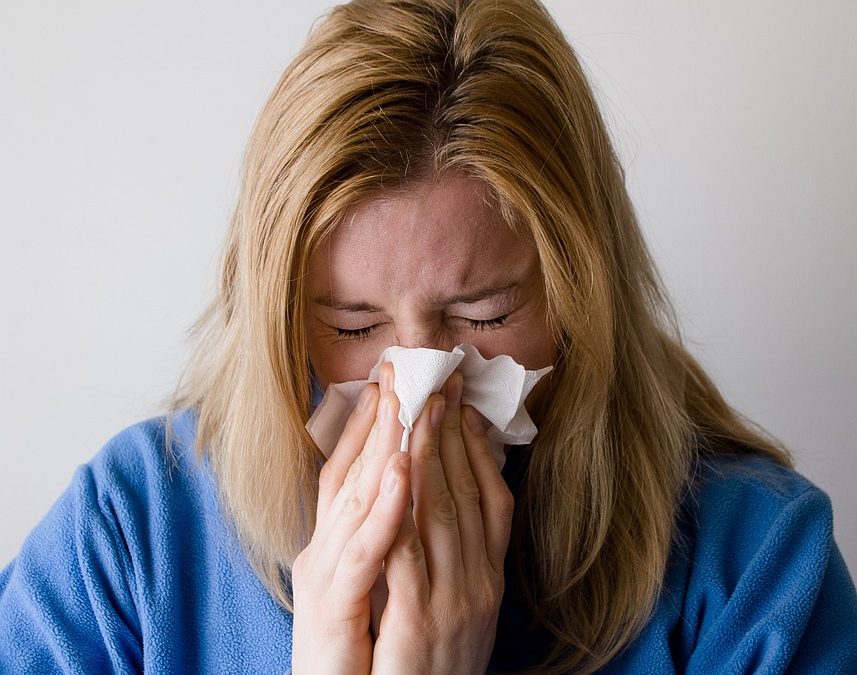
Tips to Remove Chocolate and Candy Stains From Carpets
August 30, 2023
4 Best Outdoor Furniture Cleaning Tips
September 11, 2023Your home is a safe-haven and sanctuary that keeps you warm and protects you and your family. But do you know that this same home can sometimes harbor materials that can trigger your allergies?
Imagine returning to the warmth and comfort of your home after a long day, eager to unwind and relax. However, instead of relaxation, you’re met with sneezes, sniffles, and an annoying itchiness. This scenario is brought to life by nothing other than allergy triggers in your home.
These allergic triggers, while troublesome, are not invincible. You can fight them off, but to do so, you need to know exactly what you’re up against. Hence, the reason for this article.
In this article, we’re delving deep into the often unnoticed ways your home might be stirring up your allergies. From the cleaning products that promise a sparkling abode to the cozy blankets that keep you warm at night, and more, we’re on a mission to uncover all culprits that trigger your allergies.
By the end of this article, you’d be armed with knowledge about allergy triggers in your home, as well as practical solutions to help you navigate the situation.
Shall we begin?
Household Chemicals
Household chemicals, from cleaning products to air fresheners, can introduce allergens into your living space. These products often contain harsh chemicals and fragrances that may irritate your respiratory system.
To reduce chemical-related allergies:
- Opt for eco-friendly, hypoallergenic cleaning products.
- Ventilate your home when using chemicals.
- Consider natural alternatives like vinegar and baking soda for cleaning.
Poor Air Quality
Indoor air quality plays a significant role in allergy triggers. Pollutants like smoke, pollen, and even cooking fumes can degrade air quality, leading to discomfort and irritation.
To improve air quality:
- Ensure proper ventilation in your home.
- Use air purifiers with HEPA filters.
- Keep windows closed during high pollen seasons.
- Avoid smoking indoors.
Mold
Mold thrives in damp environments and can be a potent allergen. It often hides in places like bathrooms and basements.
To prevent mold-related allergies:
- Fix any water leaks and seeps.
- Use a dehumidifier to keep humidity levels in check.
- Clean and remove visible mold promptly.
Dust and Debris
Dust and debris, seemingly harmless, can be the bane of allergy sufferers. These tiny particles are notorious for hiding in our homes, especially in bedding, pillows, and carpets. Dust mites, too small to be seen, release allergenic proteins that can cause sneezing, congestion, and even asthma attacks.
To combat this issue:
- Regularly clean and vacuum your home.
- Invest in hypoallergenic pillow and mattress covers.
- Consider using an air purifier to trap airborne particles.
Pets
Our beloved pets bring joy into our lives, but their presence can also trigger allergies, primarily due to pet dander—tiny flecks of skin, fur, or feathers. Over time, even non-allergic individuals may develop sensitivities.
To minimize pet-related allergies:
- Bathe your pets regularly.
- Groom pets outdoors to limit the spread of allergens.
- Establish pet-free zones within your home.
- Vacuum with a HEPA filter-equipped vacuum cleaner to eliminate pet dander.
Clothing Materials
Surprisingly, the materials in our clothing can contribute to allergic reactions. Some people are sensitive to synthetic fabrics like polyester or nylon, which can trap moisture and lead to skin irritation. Others may react to dyes and chemicals used in clothing production.
To prevent clothing-related allergies:
- Choose natural, breathable fabrics like cotton or linen.
- Wash new clothes before wearing them to remove any potential residual chemicals.
- Avoid tight-fitting garments, as they can cause friction and skin irritation.
Bonus: Other Causes of Allergies in Your Home
Humidity
Excess humidity in your home can create an environment where dust mites and mold flourish, exacerbating allergies. Maintaining optimal humidity levels can help alleviate these issues.
To control humidity:
- Use a dehumidifier in damp areas.
- Ensure proper ventilation in bathrooms and kitchens.
- Repair any and all leaks.
Toys
Children’s toys can accumulate dust and allergens over time, particularly plush toys. Regular cleaning and proper storage can help reduce allergen exposure.
To keep toys allergen-free:
- Wash stuffed animals and toys regularly.
- Store your children’s toys in containers when not in use.
- Encourage your children to always wash their hands after playing.
Cockroaches
Cockroach allergens, present in their saliva, feces, and shed body parts, can trigger allergies and asthma. Proper pest control measures are essential.
To prevent cockroach-related allergies:
- Seal cracks and crevices to keep roaches out of your space.
- Store food in airtight containers.
- Hire a professional pest control service
Smoke
Smoke, whether from cigarettes or cooking, can irritate your respiratory system and worsen allergies.
To reduce smoke-related allergies:
- Avoid smoking indoors.
- Use exhaust fans while cooking.
- Maintain your HVAC system.
Conclusion
Understanding the allergy triggers within your home is crucial for a healthier, more comfortable life. By getting rid of dust and debris, managing pet-related allergens, selecting the right clothing materials, and following the other tips in this article, you can make your home allergy-free.
If the problem persists, reaching out to experts like Premier Carpet Cleaning may be a great choice. Our professionals possess not only the skills but also the experience to clean your home and greatly reduce the risks of allergic reactions.

